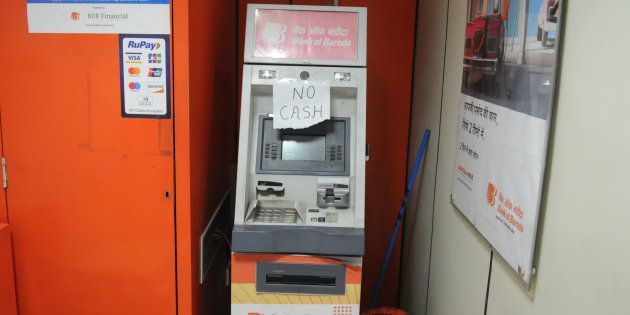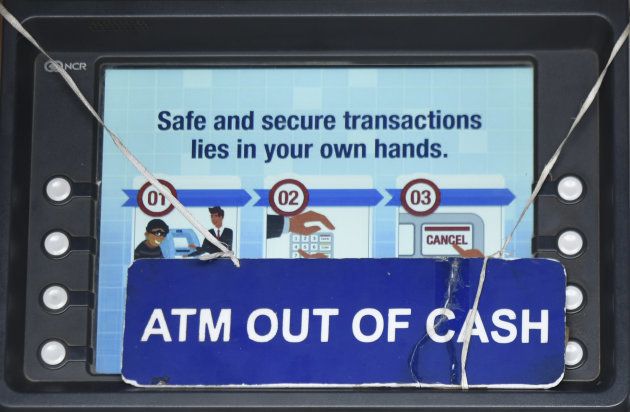
MUMBAI (Reuters) - The government and the Reserve Bank of India said on Tuesday they will ensure there is an adequate amount of cash in circulation, following reports that banks' automated teller machines (ATMs) had run out of notes in different parts of the country.
The RBI said it had ramped up printing of notes despite having sufficient cash in its vaults and currency chests.
"As a matter of abundant precaution, RBI is also taking steps to move currency to areas which are witnessing unusually large cash withdrawals," the central bank said in a statement late on Tuesday.
"The total stock of currency has come down but still we have notes worth more than two trillion rupees"
Cash withdrawals in India go up during the crop harvest season, which is usually during March to April, and then during the festival season in October. But there has been an unusual rise in currency demand in the last three months.
That is a source of worry for policymakers because a sustained heavy currency withdrawal suggests people may be hoarding cash again.
Prime Minister Narendra Modi had ordered a shock ban on high-value currency notes in late 2016, in a move aimed at flushing out hoarded cash and curbing the funding of terrorism.
"The total stock of currency has come down but still we have notes worth more than two trillion rupees ($30 billion) in stock which is more than sufficient," said the government's economic affairs secretary Subhash Chandra Garg.
Currency withdrawal by individuals during January-March 2018 was at 1.4 trillion rupees, sharply higher than 1.1 trillion rupees in the same quarter of 2016, according to Reserve Bank of India data. The March 2017 quarter data is not comparable as the RBI was in the process of re-injecting currency notes after the so-called demonetisation in November 2016.

The RBI on Tuesday said that the shortages in some pockets might be due to the logistics of replenishing ATMs and that the recalibration of machines was underway. "RBI is closely monitoring both these aspects," it said.
While it is difficult to trace any specific reason for such massive cash withdrawals this year, analysts say that concerns over the health of India's banking system has also led savers to withdraw cash.
India's banking system has been fraught with challenges including a surge in bad loans and a recent revelation of a $2-billion fraud at the country's second-largest state lender Punjab National Bank.
Investors have also been wary of issues surrounding the chief executives of two big private sector lenders - ICICI Bank and Axis Bank.
Cash withdrawals have gone up sharply in the last three months especially in states of Andhra Pradesh, Telengana, Karnataka, Madhya Pradesh and Bihar, the government said in a release adding that it would be "supplying adequate currency notes to meet even higher levels of demand if such demand were to continue in the coming days/months".
The government also dismissed concerns over an insufficient supply of the high-value 2000 rupee note while acknowledging that there was a lower inflow of the highest-denominated notes coming back into circulation.